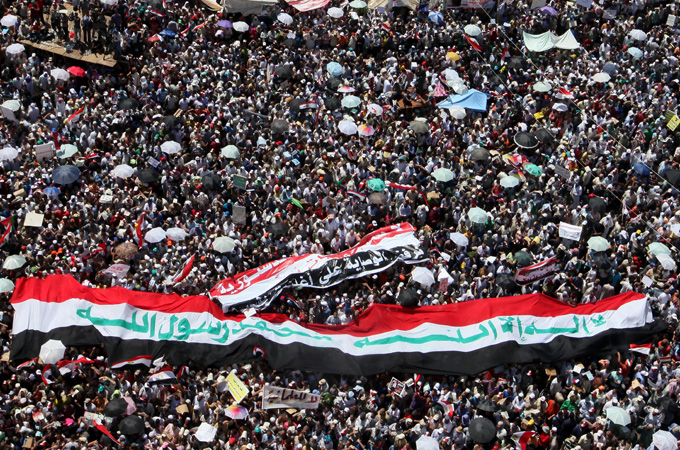The Incomplete Revolution
Cut to 2014, the revolutions in its fourth year appeared to be playing in the hands of Arab rulers

Much has been written on the causes of Arab revolutions, commonly known as the Arab Spring, referring to a series of protests that engulfed the Arab world in the beginning of 2011. Inspired by the self–immolation of a graduate street vendor in Tunisia to protest humiliation inflicted on him by the police state, the ordinary Arabs stood up to confront entrenched autocratic regimes.
The revolutions had been in the making for long building upon socio– economic and political grievances festering under the garb of neoliberal growth and stability. The ordinary Arabs in Tunisia, Egypt, Libya, Yemen, Syria, Bahrain, etc., came on the streets to hold their rulers accountable for robbing them off their basic rights and issued the slogan of ‘bread, social justice and a representative regime’. The “exceptional” courage with which they faced state repressions ignites hopes of a new beginning, a new Middle East.
Scholars, writers and the media hailed the ordinary Arabs, especially the young Arabs earlier referred to as “youth bulge”, for organising massive leaderless movements across the region and bringing down oppressive regimes. These youths, who form nearly 60 per cent of the region’s population, had been reduced to demographic burden under market–led economic system. They had been demanding jobs, decent wages, dignity, public services and basic human rights in exchange for conceding their political rights to the regimes. But their demands fell on deaf ear and were often met with harsh repression and state brutality.
Standing on the edge of anger and frustration, they battled with their rulers that culminated in the removal of four heads of the republics in Tunisia, Egypt, Libya and Yemen. In other Arab states the revolutions did cause change in status quo. People’s bravery prompted many to predict that there would emerge a new Middle East; the ordinary Arabs who have lost their fear would no longer allow the oppressive dictatorships to rear its head again; the new governments emerging from the revolutions will not be the same, and so forth.
Cut to 2014, the revolutions in its fourth year appeared to be playing in the hands of Arab rulers while the revolutionary Arabs have been pushed to the margins. Without indulging in a whirlwind tour of the region following the revolutions, the focus here is on the traditional leader of the Arab world – Egypt. After the fall of Egypt’s long–time strongman Hosni Mubarak in February 2011, the Egyptians participated in large numbers in presidential and parliamentary elections described as free and fair.
In June 2012 Mohammed Morsi – member of Egypt’s largest Islamic organisation Muslim Brotherhood – was elected as the country’s first freely elected President in its history of five thousand years. But Egypt’s fledgling democracy – which was one of the core demands of the revolution – suffered a setback when the powerful army removed Morsi from power amid protests against his one–year turbulent rule. The military, which has never been apolitical in Egypt, was again at the helm and many people were celebrating the way they celebrated Mubarak’s fall.
From Mubarak’s ouster to the formation of the post–Morsi government, Egypt underwent a kind of ideological contestation that actually scuttled the revolution half way. Contestations among the left, the liberals and the Islamists (Islamists were also divided along two sects and other groups of Sunni Islam) did not result even in a kind of democratic synthesis suited to the needs and aspirations of the Egyptians. The formation of the government by Brotherhood’s political wing, Freedom and Justice Party, breathed fresh hopes into the idea of political Islam only to be smashed a little later. It should be understood here clearly that the people did not vote for Brotherhood in the name of Islam but for its role as an organised opposition with deep roots in society that it had earned for its social work. But the Brotherhood’s political inexperience and a few questionable decisions gave opportunities to its opponents to shove it to the corner again. While pro– and anti–Brotherhood activists clashed on the streets, the elements of the old guard seized power and installed a transitional regime.
After power rotation, the regime is back where it belonged to – the army. Cashing in on the fear of Islamists, both domestically and internationally, the army ousted the Morsi government, promising to steer the country towards democracy. But the army’s deeds did not match its words. The army–backed transitional government enacted anti–protest law, declared the Muslim Brotherhood a terrorist organisation, drafted a new Constitution that guarantees it immunity from public scrutiny, crushed the dissenters by launching brutal crackdowns, almost decimated political opposition, and so forth.
The larger picture under the new President Abdel–Fattah El–Sisi, the former head of Egypt's armed forces, is reminiscent of the pre–revolution era. It will not be an exaggeration to say that the dream of the New Middle East did not materialise at all.
What is more disturbing that the revolutionary Egyptians seem to have disappeared from the surface. As old guards and remnants of the Mubarak era brace themselves for the upcoming parliamentary elections later this year, they are again witness to another autocratic regime in the making. However, hopes are alive that the revolutionaries would resurface to claim their revolution they began and would complete it.
(The author is a student of M.Phil in International Studies at Jamia Millia Islamia)



